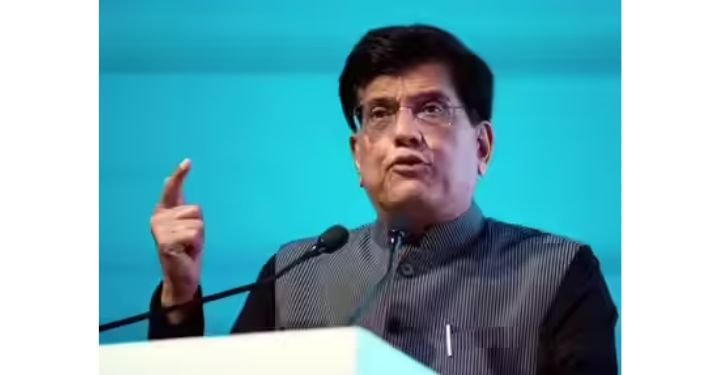India’s Commerce and Industry Minister Piyush Goyal is set to lead a high‑level delegation to the United States on September 22, 2025, for a critical round of India‑US trade negotiations. The visit comes at a time when both nations are making concerted efforts to cement a bilateral trade agreement, even as tensions over tariffs, visa policy, and strategic energy sources create headwinds.
Background: What Led to This Visit
Earlier in the month, on September 16, a US delegation headed by Brendan Lynch, Assistant US Trade Representative for South and Central Asia, visited New Delhi. They met with Indian officials led by Rajesh Agrawal, India’s Chief Negotiator in the trade deal discussions. According to official statements, those meetings were “positive” and “forward‑looking.”
In those talks, both sides agreed to intensify their efforts to reach an early, mutually beneficial agreement. However, several major sticking points remain unresolved, including demands from the US for greater access to Indian agricultural and dairy markets, pressures to reduce India’s purchases of Russian oil, and concerns over a recently imposed large increase in H‑1B visa fees, which are seen as harmful to India’s large IT and services sector.
Another precipitating issue has been the imposition of steep tariffs by the US. In late August, the Trump administration doubled duties on certain Indian goods—initially a 25% tariff was imposed, followed by an additional punitive levy. India has expressed objections, particularly since exports to the US have already shown signs of decline in the months following these tariff increases.
What the September 22 Visit Aims to Achieve
The official line from the Ministry of Commerce and Industry is that the visit is intended to advance ongoing discussions and push towards an early conclusion of a trade deal that benefits both sides.
Goyal will be accompanied by senior officials, including Special Secretary Rajesh Agrawal, and they will engage with their US counterparts on several contentious issues. Key among these are:
- Visa regime and fees: The recent US decision to hike the application fee for H‑1B visas to USD 100,000 per year has provoked strong concerns from India, particularly its IT sector, which depends heavily on access to US markets and work permits.
- Tariff disputes: The US has imposed high tariffs on Indian exports, particularly after India’s oil purchases from Russia. India has in turn seen drops in export revenues and is seeking relief or adjustments.
- Agriculture and dairy market access: The US has pressed India to open its dairy sectors and reduce barriers on agricultural goods. India has been cautious, balancing domestic sensitivities and food security concerns.
- Energy/Trade & Geopolitical concerns: Part of the friction arises from demands linked to oil purchases (especially from Russia), which tie into broader strategic concerns from the US side.
Through this visit, New Delhi likely hopes to reduce friction, clarify its positions, and avoid escalation—especially in areas such as retaliatory trade measures or supply chain disruptions.
Stakes and Broader Implications
Both countries have significant stakes in making the trade deal work:
- For India, the agreement is critical to advancing its goal of boosting exports, strengthening its IT sector, and ensuring that economic growth continues even in the face of global headwinds. India also aims to more than double bilateral trade with the US to USD 500 billion by 2030.
- For the US, ensuring supply chain diversification, opening markets, and addressing geopolitical risks (especially around Russia) are priorities. There is also domestic pressure to protect sectors such as agriculture, dairy, and manufacturing. Trade policy is tied into broader strategic aims, including energy security, technology competitiveness, and global influence.
This negotiation is being watched closely by exporters, industry bodies like Nasscom (which has raised alarms about visa fee hikes), and diplomatic observers. Any decision—tariff relief, regulatory changes, or agricultural access—has the potential to ripple across many sectors in India.
Challenges Ahead
Despite optimism, several challenges remain:
- Balancing domestic interests: India’s concerns about protecting farmers, managing import competition, maintaining food security, and preserving the livelihoods of dairy farmers make agricultural liberalization politically sensitive.
- Visa and labor‑mobility policy issues: The H‑1B visa fee hike is not just a policy concern; it threatens to disrupt business models in India’s IT sector, especially for companies with contracts in the US requiring relocation or frequent travel.
- Strategic and geopolitical constraints: The US’s demand to reduce Russian oil imports puts India under pressure in terms of its energy security and pricing; balancing diplomatic relations and strategic autonomy will not be easy.
- Tariff and non‑tariff barriers: Even when tariffs are addressed, non‑tariff barriers (standards, certification, quotas) often continue to be a sticking point in trade deals. Ensuring fair rules of origin and equitable treatment will be key.
- Timeline pressures: Both countries seem keen to finish at least a first phase of a Bilateral Trade Agreement (BTA) in the fall of 2025 (around October/November). But resolving all contentious issues in that timeframe will require give‑and‑take and perhaps some compromises.
Outlook: What to Expect from Washington
When Goyal and his delegation land in the US, several outcomes are possible:
- Agreements in principle on sensitive issues such as partial tariff rollbacks or relief, especially for sectors that have felt the brunt of the recent US tariff hikes.
- Clarifications or modifications on visa fee policy—for example, concessions or phased implementation for certain categories to lessen disruption.
- Compromises on market access: India may agree to open certain segments of its agriculture and dairy markets, while the US may moderate some demands or adjust expectations.
- Possibly, a roadmap for implementation of the deal, with timelines, sectoral priorities, and dispute resolution mechanisms.
However, a full, all‑encompassing trade deal that satisfies both sides completely by late 2025 may still be ambitious. More likely, any deal may proceed in multiple tranches, with some contentious issues deferred for future rounds.
Conclusion
Piyush Goyal’s visit to the United States on September 22 is being seen as a critical juncture in India‑US trade relations. With recent talks described as positive, both sides appear to believe that a deal is possible—and that one is needed. But to convert optimistic rhetoric into binding agreements, delinked from geopolitical overhangs and domestic political pressures, will require hard negotiation, mutual flexibility, and a sense of urgency.
For India, the challenges are many, but the potential gains—in enhanced trade, improved access, and stronger economic ties—are huge. How the US side approaches contentious demands—particularly on barriers, tariffs, and strategic areas like energy and visas—may determine whether this visit marks a breakthrough or simply another round of talks.



Leave a Reply